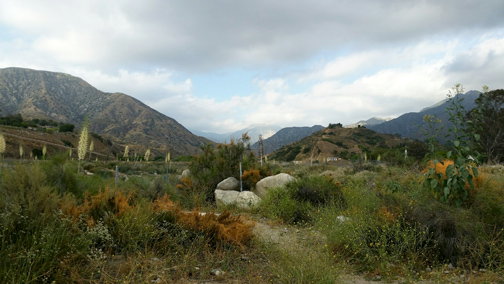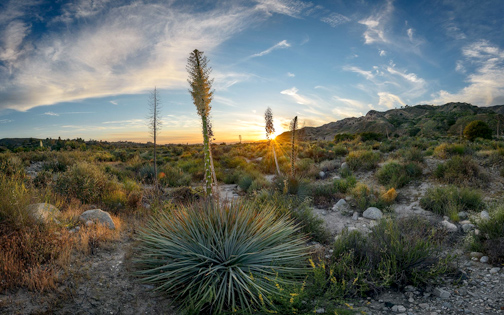
By Pat KRAMER
On July 9, the Neighborhood Council Sustainability Alliance invited all of the neighborhood councils in the City of Los Angeles to an open meeting to share concerns about environmental issues in their specific area. The Sunland-Tujunga Neighborhood Council was a part of that discussion, represented by Region 1.
When the attendees were finished introducing themselves, NCSA organizer Laura Mack asked each person to share a top environmental concern taking place in their neighborhood council area. One concern raised by the STNC was how to preserve clean and safe open space areas. This was followed by a discussion that focused on the negative impact homeless encampments have on the Tujunga Wash and other environmentally sensitive areas. Questions posed included how to keep environmentally sensitive open spaces clean, is it the responsibility as neighborhood council members to initiate efforts to clean up those areas and what city entities can be counted on for help if neighborhood councilmembers choose to be proactive and organize cleanups. As a result of this discussion, others attending the Neighborhood Council Sustainability Alliance meeting were able to share their own strategies and solutions.

Over the past several years, the Sunland-Tujunga Neighborhood Council has led numerous efforts to clean up the Tujunga Wash area by Oro Vista Park and along Big Tujunga Canyon. Gail Carlson, STNC’s Beautification Committee chairperson, has spearheaded many of these efforts organizing volunteers from church groups, schools, Boy Scouts, LAPD cadets, equestrians, environmentalists, STNC board members and, occasionally, city officials. She also was able to muster donations from several local markets and hardware stores for supplies and refreshments for those working in the trenches. In addition to these efforts, other local residents have organized their own cleanups around the Tujunga Wash where large homeless encampments have caused untold damage to natural areas, polluting water resources, blocking equestrian trails, and leaving behind a buildup of biohazardous waste. By getting community members involved in these cleanups, tons of garbage and debris have been removed from these natural areas; however, the solution appears to be short-lived because the homeless return and despoil these areas disrupting wildlife. Some suspect they also cause dangerous fires.
Other Neighborhood Council Sustainability Alliance participants were asked to contribute their experiences with community cleanups. George Ortega, a board member from the Sylmar Neighborhood Council, said that they have mobilized students and board members for their annual cleanup of the on- and off-ramps by the 210 Freeway. He also talked about how they are working with the Los Angeles City Dept. of Public Works on removing a buildup of sediment from the Pacoima Dam where there is a land use issue involving a decomposed granite mine.
Another helpful perspective came from David Uebersax, formerly of the Greater Griffith Park Neighborhood Council which has called upon the resources of Friends of the L.A. River for their cleanups. Since relocating to the Winnetka Neighborhood Council, Uebersax reported on their three-day event in April, Spring Clean, which mobilized Girl and Boy Scouts, local charter school students, board members and others for cleanups at the Winnetka Recreation Area. Councilman Bob Blumenfield has been very supportive with funding, said Uebersax, and the city’s Recreation and Parks’ staff has also helped out with manpower.
Contributing to this conversation was EmpowerLA staffer Jasmine Elbarbary who encouraged everyone to submit a Clean Streets L.A. Community Partnership plan by Aug. 26, 2016 for the Mayor’s Clean Streets Challenge. It should outline a plan to clean up a significant artery or street between Sept. 1 and Nov. 1. The Departments of Public Works and Neighborhood Empowerment will announce and distribute awards totaling $25,000 for the best action plans.
In addition to the panel on Clean and Safe Open Space, other discussions focused on how to safely address the issue of coyotes in urban areas, the ongoing use of illegal gas powered leaf blowers, homeless encampments, and how to achieve 100% clean energy by 2035 for the City of L.A.
Future plans for advocacy by neighborhood councils will focus on the high speed “bullet train,” corporate air pollution at Aliso Canyon, ways to help trees survive in light of the city’s cutback of irrigation, and a campaign to ban Styrofoam. By coming together for an afternoon of informative discussions, diverse neighborhoods across L.A. got a clearer idea of how to organize efforts for sustainability and advocacy.
Anyone living within the City of L.A. who is interested in playing a critical role in advancing sustainability and resilience across the city through advocacy, sharing of best practices, and community action, is encouraged to get involved in NCSA. For more information, go to http://ncsa.nationbuilder.com or contact STNC at (818) 951-7411.
Pat Kramer was elected to the Sunland-Tujunga Neighborhood Council in April as the repre-sentative for Region 1.
